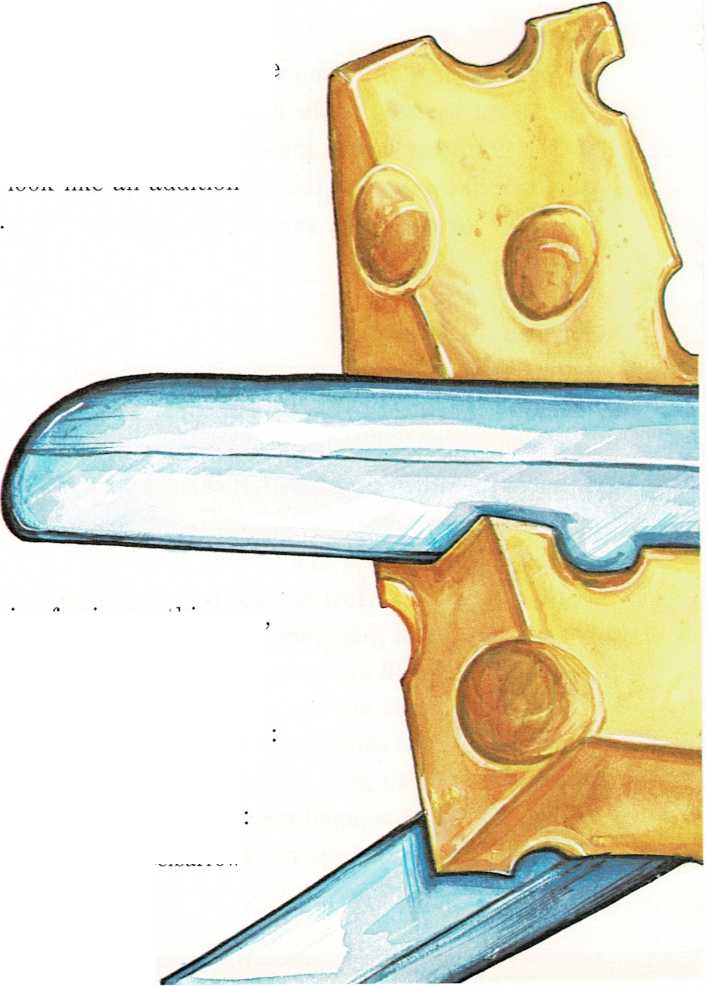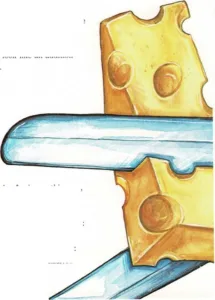Machines from machines
It’s easy to see how a pair of scissors works. Every time you squeeze
the handles together, the blades cut into the paper.
Using a pair of scissors is simple—but scissors are not a simple
machine. They are really two kinds of simple machines put together. Each
half of the scissors is a lever. And the blade on each half is a wedge.
Most of the machines we use every day are made up of two or more simple
machines put together. In fact, a list of what goes into most machines
would look like an addition problem in arithmetic.

If you think of a pair of scissors this way, here’s what you get:
lever + wedge + lever + wedge = scissors
A knife is more like half a pair of scissors: lever + wedge = knife
A wheelbarrow is another easy problem: lever + lever + wheel and axle =
wheelbarrow

A revolving door gets to be a much longer addition problem, but it is
made up of the same simple machines:
wheel and axle + lever + lever + lever + lever = revolving door
Listing all the simple machines in something as complicated as a
typewriter would be an addition problem pages and pages long! But if you
wrote out the problem, there would still be only six kinds of things—
six simple machines—to add together. Your list would be made up of
levers, inclined planes, wedges, screws, pulleys, and wheels and axles.

